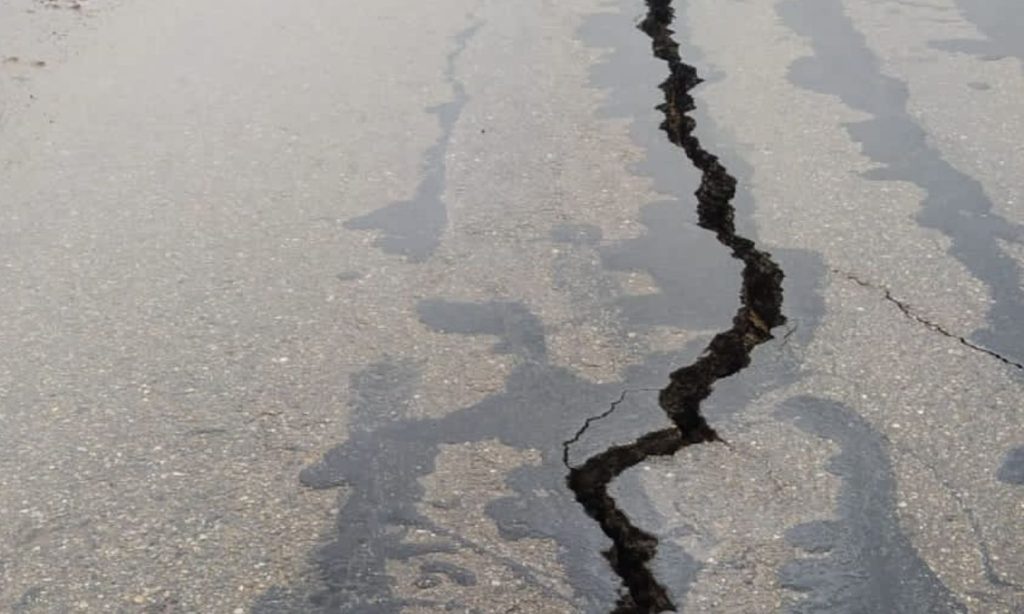The Maydanki dam in the northern city of Afrin was exposed to huge longitudinal and transverse cracks as a result of the powerful 7.8 magnitude earthquake that struck southeastern Turkey and northwestern Syria on Monday and left over 5000 people dead.
The circulating photos and footage showed large cracks occurred in the dam in the northern countryside of Aleppo governorate.
Crossing through the area was banned and completely closed amid local warnings of the danger of not restoring the dam as soon as possible.
The Maydanki dam, also known as the Afrin dam or “17 April” dam, is located 70 kilometers from Aleppo and 12 kilometers from the town of Afrin, near the village of Maydanki, which overlooks the Afrin River.
The catchment area is 527 m2, and the annual precipitation ranges from 330 to 700 millimeters.
The Afrin River originates from the south of the Kartal Mountains in Turkey and crosses into Syria, where it passes through the city of Afrin and then returns to Turkey.
Lack of maintenance leads to “collapse”
Adnan al-Moubayed, an engineer specializing in seismology, told Enab Baladi that facilities, in general, are designed according to their importance and severity in the event of earthquakes, according to technical conditions, so that the larger the building (its floors increase), the more its construction conditions increase, depending on the number of its expected residents.
The dam is considered one of the most dangerous installations after the nuclear facilities with regard to earthquakes, which must be designed based on very large safety factors to resist earthquakes in their strongest degrees up to 9 on the Richter scale, according to the engineer.
Dams have many types, the most prominent of which are concrete dams and embankment dams.
The concrete dam is a reinforced concrete with small and specific thicknesses, its resistance is limited, but its cost is very high, which makes the embankment dam an alternative to it, which is based on an impermeable clay core that forms the basis for the water retention process to ensure that it does not leak.
In the case of the embankment (rubble) dam type, the backfilling process is added with selected and calculated stones in terms of gradation and hardness, after which the cladding stage is completed.
Based on these specifications, al-Moubayed assures that this dam here can resist earthquakes up to 9 magnitudes.
The Maydanki dam has suffered during the past ten years from neglect of maintenance for everything necessary to maintain it, which led to a decrease in its life span and its safety factor.
The longitudinal and transverse cracks in the dam body also resulted from the lack of permanent technical monitoring of this dam for a long time.
The engineer explained that the danger lies in the cracks caused by the water within these cracks, as it is possible for the water to leak, which in turn may lead to the expansion of the cracks and generate additional cracks, which may cause a collapse in the dam due to the entry of water into the body of the dam.
As a result of the dam’s rupture, the Free Syrian Engineers Association in Turkey formed a committee to uncover the dam’s body in the coming time and to develop perceptions, proposals, and solutions for that, al-Moubayed concluded.











